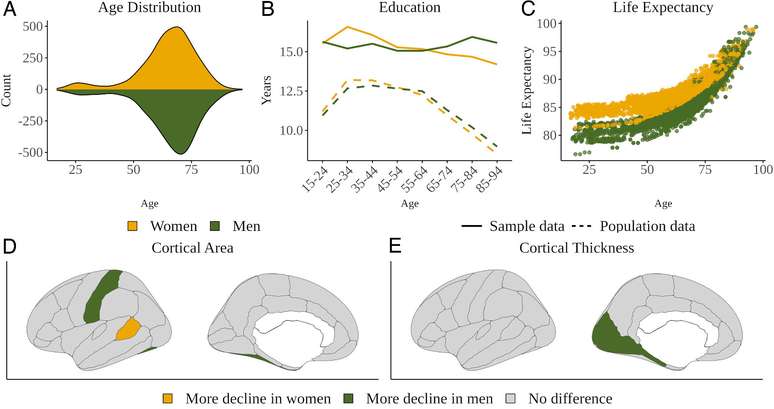The phase causes physical and emotional changes in the woman’s body; Find out how to recognize the key changes
Perimenopause, the time before menopause, is characterized by physical and emotional changes in women’s health. Hormonal changes, caused by the decline in estrogen, the main female hormone, are felt by 70% of women and can last for years (7.4 years on average). Although hot flashes (the famous hot flashes) are the most well-known symptoms, there are other changes that can occur that are not often discussed.
According to the experts consulted by Einstein AgencyThese changes begin to be felt between the ages of 45 and 50, during the transition from the reproductive to the non-reproductive period. This is because, in addition to fluctuating estrogen levels, the menopausal transition also causes elevated levels of the follicle-stimulating hormone, known as FSH, as it requires extra effort to recruit the remaining ovarian follicles.
Not all women, however, realize and associate reproductive health with these physical and emotional changes, even if they don’t talk about it on social media. requests doctors.”The person still has periods, but begins to have a subjective perception of the changes, which involve less energy, a more common feeling of tiredness, mood swings and less ability to carry out one’s tasks.“, says the gynecologist Igor Padovesiassociated with the Brazilian Federation of Gynecology and Obstetrics Associations (Febrasgo) and member of the International Menopause Society (IMS).
At this point, some already suffer from the classic and well-known symptoms of this transition phase – hot flashes, for example –, but they also face nonspecific signs, such as abdominal distension, headaches, difficulty losing weight and easy weight regain. weight. As for menstruation, many still menstruate regularly, but the cycles may begin to vary, for example becoming shorter and more spaced out; the flow becomes, among other things, heavier or scantier.
For all these reasons, many still fail to realize what is happening and believe they are experiencing an exacerbation of the symptoms of premenstrual tension, known as premenstrual syndrome. “This period is quite challenging because, since the fluctuation of hormones is very significant, the hormone dosage cannot faithfully reflect how things are in the patient’s body.“, explains Padovesi.”Tests can be altered, even if they are not, which is why the diagnosis of perimenopause is clinical, based on symptoms.“
After this phase, menstruation begins to become more spaced out until it stops completely. “We consider a woman to be in menopause when she has not had a period for 12 consecutive months.”explains the gynecologist Helena Hachul de CamposProfessor of Women’s Health at the Faculty of Medicine of the Albert Einstein Israelite Hospital.
The arrival of menopause varies greatly from person to person, but usually occurs between the ages of 45 and 55 and intensifies the symptoms that had already appeared. Discover the most common manifestations caused by hormonal changes below:
- Higher risk of depression
A study published in July in the scientific journal Journal of Affective Disorders reveals that the risk of depression in perimenopause is considerable, despite the fact that hormonal changes are still in their early stages. Researchers at University College London, England, analyzed seven studies involving 9,141 women from different countries and concluded that during this period there is a 40% greater risk of depression compared to pre-menopause.
The authors emphasize the need to pay attention to the mental health of perimenopausal women, especially because symptoms related to hormonal problems are not always so obvious and may require medical and psychological support.
Einstein’s gynecologist agrees. “It is not easy to deal with all the physical and emotional changes that occur during this period and that have a significant impact on one’s self-esteem and quality of life”, states Helena Hachulwho is also a professor and head of the women’s sleep sector at the Federal University of São Paulo (Unifesp). In addition to the physical changes, many are still going through situations such as the children leaving home, generating the empty nest syndrome.
- Cardiovascular Disease Warning
The decrease in estrogen leads to an increase in LDL, the bad cholesterol, and a reduction in HDL, the good cholesterol, which has a protective effect on the heart. In addition, female hormones stimulate the dilation of the vessels and facilitate blood flow. This is why, in this phase in which they are decreasing, problems such as heart attacks and cerebrovascular accidents (CVA) can appear.
- Change in body fat distribution
Less estrogen causes women to move from the gynecoid biotype, in which fat tends to accumulate around the hips and buttocks, to the android biotype, in which fat tends to gain in the abdominal region. “This also increases cardiovascular risk, as abdominal fat promotes the production of inflammatory substances that can trigger heart attacks and strokes.”“, warns Hachul.
- Genitourinary syndrome of menopause
This is the name used to refer to the set of signs caused by changes in the urogenital system in response to the decrease in female hormones. “It involves burning, itching, atrophy and vaginal dryness, which causes discomfort during sexual intercourse, and urinary symptoms, such as overactive bladder and urinary incontinence”quotes Padovesi.
- Changes in sleep
Science has not yet deciphered exactly what leads to disorders such as insomnia or excessive sleeping during this phase, but the main theories suggest that female hormones play an important role in the biological clock. The problem would also be linked to the psychological problems typical of the approach of menopause and its arrival, since they can increase stress and, consequently, disturb sleep. Increased urinary frequency can also compromise rest, since women need to get out of bed to pee.
- Bone problems
Decreased estrogen can predispose to conditions such as osteopenia (loss of bone mineral density) and osteoporosis (a condition in which bones become brittle and fragile). This hormone stimulates osteoblasts, cells responsible for bone formation.
This phase also sees an increase in osteoclasts, cells that act to break down components of the bone matrix.
- Emotional changes
Characteristics of this process also include irritability, attention and memory deficits, anxiety, decreased libido and mood swings, among others. “Mental symptoms are the most common and appear in the short term due to the decrease in estrogen”, explains Hachul.
- Skin aging
During menopause, the skin tissue undergoes a sharp decline in the synthesis of support fibers: collagen and elastin, responsible for firmness and elasticity, respectively. The result is thinner, more fragile and dry skin, with more wrinkles and sagging skin.
- Heat waves
This is the most famous symptom of this phase of life. The so-called hot flashes do not occur only during menopause, as many people think, but throughout the climacteric, which includes the different phases of this transition.
They arise because all these changes affect the body’s temperature regulation center. According to studies, they can increase the risk of cardiovascular problems. Not to mention that they are very uncomfortable and can seriously disturb some daily activities and sleep.
After perimenopause
After a year without menstruation, a woman enters the so-called postmenopause. This phase is divided into “late,” or the first eight years, and “late,” after this period. In many cases, the classic signs of menopause diminish considerably, but there are people who experience symptoms for decades after the transition.
During postmenopause, the risk of health problems resulting from low hormone levels increases significantly, which is why medical monitoring is especially important to assess the need for lifestyle changes and the possibility of hormone replacement therapy.
“It is important to be clear that this transition process happens to everyone, invariably. For some it comes a little earlier, for others a little later and the duration can be variable, as can the symptoms, but in everyone it is a process that takes several years and is not linear”explains Padovesi.
However, despite the various symptoms of menopause, it is possible to live well and with quality of life during this phase, taking care of one’s health, diet and practicing physical activity. “It is important to recognize that it is a positive moment, in which we are mature and have already built many things in life. It is necessary to have a calm outlook because it is a phase of change, which does not only bring bad aspects”emphasizes gynecologist Einstein.
Source: Einstein Agency
Source: Terra
Ben Stock is a lifestyle journalist and author at Gossipify. He writes about topics such as health, wellness, travel, food and home decor. He provides practical advice and inspiration to improve well-being, keeps readers up to date with latest lifestyle news and trends, known for his engaging writing style, in-depth analysis and unique perspectives.








